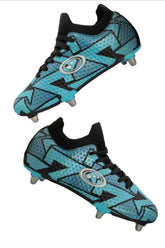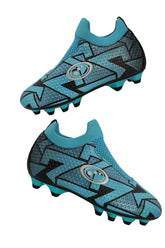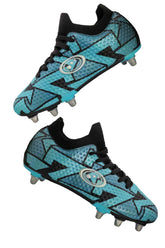Breaking Down Rugby Positions: A Beginner's Guide
Breaking Down Rugby Positions: A Beginner's Guide
Rugby is an exciting and fast-paced sport that requires players with specific skill sets to excel in different positions. If you're new to rugby, understanding the various positions on the field can be a bit overwhelming. In this beginner's guide, we will break down the key rugby positions and their roles to help you better understand the game.
1. Fullback
The fullback is a defensive position, typically positioned deep in the backfield. Their primary role is to catch high kicks and clear the ball from their own half. Fullbacks also play a crucial role in counter-attacks and supporting the backline during offensive plays.
2. Fly-half
The fly-half, also known as the first-five or the pivot, is a key decision-maker on the field. They are responsible for organizing the team's attacking plays, kicking for territory, and distributing the ball to the backline. The fly-half requires excellent tactical awareness and strong kicking and passing skills.
3. Scrum-half
The scrum-half, also known as the half-back, is the link between the forwards and the backline. They play a crucial role in setting up attacking plays, passing the ball from the base of the scrum or ruck, and providing quick and accurate service to the fly-half. The scrum-half must have good communication skills and quick reflexes.
4. Loosehead Prop
The loosehead prop is one of the front-row players in the scrum. They provide stability to the scrum and assist in pushing the opposition backward. Loosehead props also contribute in open play by making tackles and carrying the ball forward.
5. Hooker
The hooker is positioned between the two props in the front row of the scrum. Their main role is to hook the ball back with their feet during scrums, lineouts, and restarts. Hookers also play an important role in the loose, making tackles, and providing support in rucks and mauls.
6. Flanker
The flankers, also known as the openside and blindside flankers, play a crucial role in both attack and defense. Their responsibilities include winning turnovers, making tackles, supporting the ball carrier, and disrupting the opposition's play. Flankers need to be agile, strong, and have excellent tackling and ball-carrying skills.
7. Number 8
The number 8, also known as the eighthman, is positioned at the back of the scrum. They provide stability and control at the base of the scrum, and their role extends beyond the set-piece. Number 8s are often involved in running with the ball, making tackles, and providing support to the team in both attack and defense.
8. Locks
The locks, also known as the second-row forwards, are tall and powerful players who play a crucial role in the scrum and lineouts. They provide stability and power in the set-pieces, and are often involved in carrying the ball forward and making tackles during open play.
9. Centers
The centers, consisting of an inside center and an outside center, are key playmakers in the backline. They are responsible for both attacking and defending. Centers need to have good passing and tackling skills, as well as the ability to create and exploit gaps in the opposition's defense.
10. Wingers
The wingers, positioned on the edges of the backline, are known for their speed and agility. Their primary role is to finish off attacking moves by scoring tries. Wingers also play a crucial role in defense, as they are often the last line of defense against the opposition's wingers.
11. Fullback
The fullback is positioned behind the backline and provides cover in defense. They play a similar role to the winger but often have more defensive responsibilities. Fullbacks need to be skilled in catching high balls, making tackles, and launching counter-attacks.
Understanding the different rugby positions is essential for appreciating the game and following the strategies employed by teams. Whether you're a player or a spectator, having a basic knowledge of the various positions will enhance your rugby experience.






